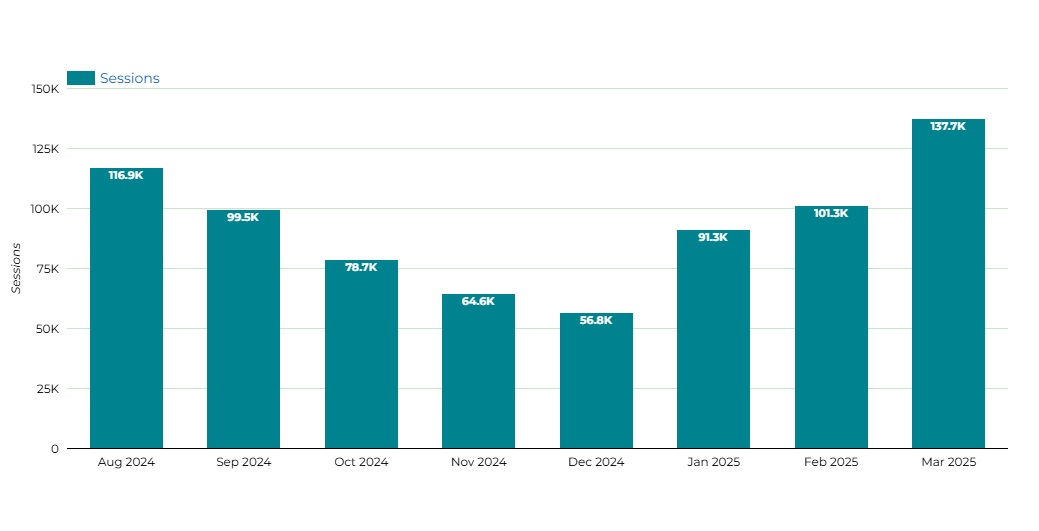The impact of web design on SEO – a case study

Posted by: David Hall
We had an interesting experience with a website project that we launched last August. We were asked to do a redesign of a highly popular gardening website that has over 100,000 visitors every month.
We went through our usual design procedure. The client filled out our design questionnaire and we had one of our designers produce a mock-up that the client approved. The design was then sent to our technical team to code.
Sometime after the design was sent to the technical department, the client decided to hire her own designer. Our web developer then simply worked with the designer to make the changes she wanted. The design was changed dramatically. The home page, in particular, was expanded way beyond what our design department would have recommended. The menu was restructured. Our web developer, anxious to please the client, didn’t consider running any of the changes by anyone else in the company.
The site was then launched on August 29, 2024. That’s when the trouble began.
Traffic dropped—and continued to drop. There were 116,882 visitors in August. In September that dropped to 99,536. By December, traffic was down to 56,754. Since the client had SEO skills of her own that had built up the site to its high level of popularity, we weren’t asked to provide any SEO services, so we weren’t following the traffic. But when the client complained in December about the precipitous traffic drop, we felt duty-bound to provide, pro bono, a thorough SEO analysis of the site, in case our technical team had introduced errors into the site that were negatively impacting its rankings.
Our SEO analysis, however, concluded that the new home page design was the culprit. Here is the report:
“There are two main structural problems:
“First, and by far most important, the content of the home page is so extensive and broad that it dilutes the important topics and confuses Google about the focus of the site. Google reads your linking structure and what you put on the home page to discern what is important on the site. Best practice is to keep the home page a reasonable length and focus on the main subject matter of the site. Pages linked from the home page are considered the most important and tell Google what to highlight. For example, when you link to recipes on the home page, it tells Google that besides being a gardening site you are a recipe site.
“The home page is also so long that it may not be a good user experience. Two-thirds of visitors are viewing the site on a mobile phone, and its length is even more intimidating on a phone. Several years ago, Google introduced a concept called mobile-first indexing. This means that Google’s web crawler prioritizes indexing the mobile version of a website’s content over its desktop counterpart, which informs rankings. Google could be rating the excessively long home page as a less-than-optimal user experience, which would depress the rankings.
“Rather than trying to throw everything onto the home page, a better design strategy would be to identify the key elements of the site that generate the most traffic and revenue, and focus on them. A common practice I advocate is to have a place on the home page where the site displays featured items that are the most popular and generate the most revenue. I would recommend that for you. And to be maximally effective, you need to pare down the home page severely by including only subjects that are key to the success of the site and that accurately communicate to Google the focus of the site.
“Second, pages that previously were the most trafficked have been demoted in the navigation structure, which signals to Google that they aren’t important. [The report then inserted a list of the most popular posts.] It looks like these have been demoted in the site. In other words, it takes several clicks through various menus to get to them.”
It was the day before New Year’s Eve. To avoid any delays, I decided to take it upon myself to make the changes the SEO analysis called for, without asking for approval from the client. I deleted a fair amount of the home page, paring it down nearly by half. I revised the menu structure somewhat to give higher emphasis to the most popular posts. I took out any mention of recipes on the home page.
The result? Traffic began to rebound in January and continued to improve in February and March to where it was higher than before we launched. Here is a graph of the traffic as reported by Google Analytics:
The response to our corrections validates the recommendations of the report.
Takeaways from This Case Study
While we already understood that the home page should not be excessively long and should be focused on key elements of the business, we didn’t have a feeling for how critical these principles were and how profound an impact violating them could have on search engine optimization.
Also, regarding the menu structure, the main menu telegraphs to Google what you consider to be important pages. So it should be linking to your key pages. Links to less important pages can be buried in the internal structure of your site.
Finally, a note to business owners—make sure whoever designs your website has a strong foundation in SEO. SEO skills need to be combined with design skills to produce an effective website.


Great news on the rebound!
Being part of this site deployment and observing the traffic results was an interesting experience.
I was impressed by your decision to go beyond the service that the site owner had signed up for by providing the site analysis and fixes.